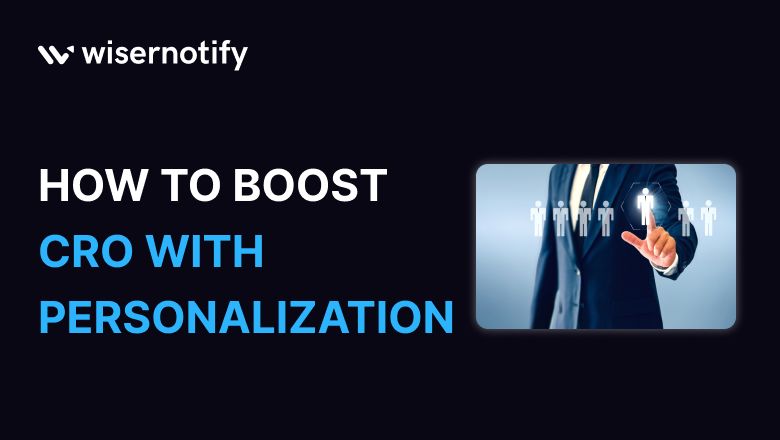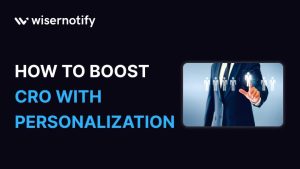The rapidly evolving eCommerce market has transformed the way customers shop by analyzing customer data, behavior, and engagement patterns; businesses can strategically approach personalization to enhance customer experience, leading to increased conversion rates, customer satisfaction, engagement and retention.
Providing a personalized experience across all digital platforms can help your brand stand out and convert visitors into loyal customers.
In fact, 81% of customers spend more time with companies that offer personalized and seamless experiences.
Personalization is not only for an online store; it extends to staying connected with the customers post-purchase and increasing the conversion rate in retail. eCommerce personalization is one of the effective ways to give customers a positive shopping experience and increase conversion rates for your brand.
This blog explores how personalization in eCommerce influences customer behavior, increases engagement, and increases conversion rates to enhance the customer journey.
Build trust & FOMO
Highlight real-time activities like reviews, sales & sign-ups.
What Is Personalization in eCommerce?
eCommerce personalization uses customer data points to customize their online shopping experience based on their past interactions, purchase history, preferences, and other relevant data.
The businesses can offer personalized product recommendations, advertisements, coupons, content recommendations, and more based on their past preferences.
This approach can involve various strategies, from personalized product recommendations and dynamic website content to customized email marketing campaigns and targeted promotions.
Personalization aims to enhance customer experience, make them feel valued, and ultimately drive engagement and conversion rate.
The personalization can be achieved through various means, such as:
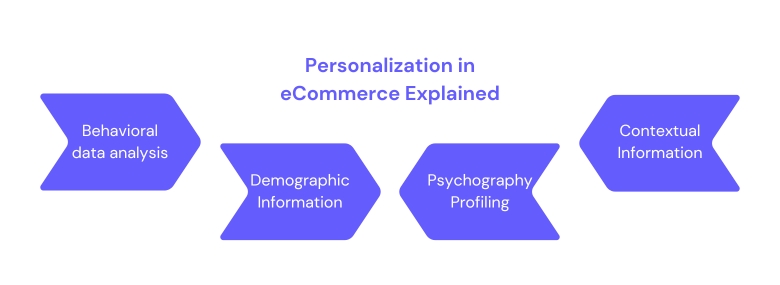
- Behavioral Data Analysis: Track customer behavior from browsing history, click patterns, and purchase history.
- Demographic Information: Using data such as age, location, and other demographics can help to enhance customer experience.
- Psychographic Profiling: Understand customer’s interests, lifestyles, and preferences to show them relevant products and content.
- Contextual Information: Monitor current trends, seasons, and real-time factors that help personalize interactions.
You can increase conversion rates and ROI by providing personalized experiences for your target audience.
Also Read : 15 Simple Ways to Increase Free Trial Conversion in 2024
How Personalization in Conversion Rate Optimization
Role and impact of personalization techniques in improving conversion rates. Understanding customer behavior in the online marketplace is crucial to influencing customers and increasing sales.
Ecommerce customer behavior refers to the thoughts, feelings, emotions, and actions that drive individuals to influence their purchasing decisions.
For example, if a customer wants to buy sports gear, showing them new arrivals in that category or offering a discount on related items can influence them to make a purchase. Personalization helps to reduce cart abandonment by sending special offers and reminders to the customers who left their cart without completing the purchase.
Further, when customers receive personalized treatment, they are more likely to return and become loyal customers.
Satisfied customers not only return to make a purchase but also tend to spend more, especially when they are offered personalized discounts or recommendations from their previous purchases.
Delivering personalized content that matches customer expectations can help differentiate you from competitors and increase brand awareness.
Website personalization allows companies to tailor their online presence to the specific needs and preferences of their target audience, resulting in increased customer engagement and a competitive advantage.
Want to optimize conversions using personalization? Here are a few tactics to help you provide a unique, personalized, and seamless customer experience.
Personalization Tactics to Enhance the Customer Journey and Increase Conversion
When we talk about personalization in eCommerce, it’s not only about audience targeting; it’s more about providing unique and personalized experiences for different customer segments.
Here are personalized strategies to consider.
1. Personalized Product Recommendations
One tactic you don’t want to miss is personalizing your recommendations to your customers. Customer data and cookies can help you obtain information about customers’ locations, ages, preferences, browsing histories, and previous purchases.
Mobile devices are becoming an increasingly important channel for personalized recommendations. Showing “recently viewed” and “you might also like” options on your website can motivate customers to make a purchase.
Display personalized recommendation products on the home page, product pages, and during checkouts to increase the likelihood of additional purchases.
For example, XPDBoots shows relevant product recommendations to the customers.
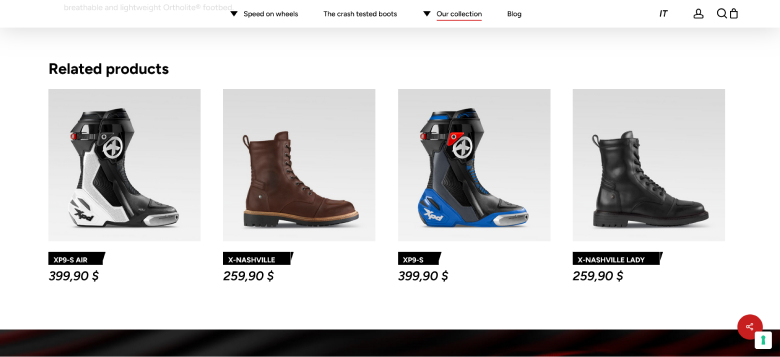
2. Retargeting Ads
Retargeting ads are display ads shown to the customers based on the product they viewed before or in their cart but didn’t complete the purchase. Retargeting ads give you another chance to capture customers’ attention and influence them to make a purchase.
Retargeting ads can be displayed on social media sites or search engine platforms like Google to grab customers’ attention. Further, on-site retargeting can be an alternative way to use popup offers to make it relevant to the customer’s session behavior.
For example, Nike’s email marketing retargets customers to complete their purchases.
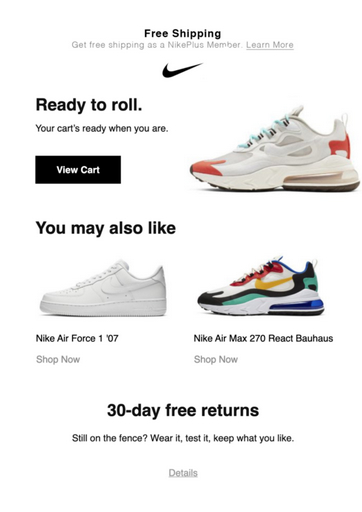
3. User-Specific Discounts & Offers
User-specific discounts involve special deals or discounts based on the customer’s shopping history and behavior, such as cart abandonment, frequent purchases, or product views. If certain customers haven’t purchased from your store in a while, retarget them by offering offers & discounts.
Implement a loyalty program that provides personalized rewards and discounts based on customer activity and purchase history, incentivizing repeat purchases and fostering long-term loyalty. For example, Uber Eats personalized offers directly grab customers’ attention.
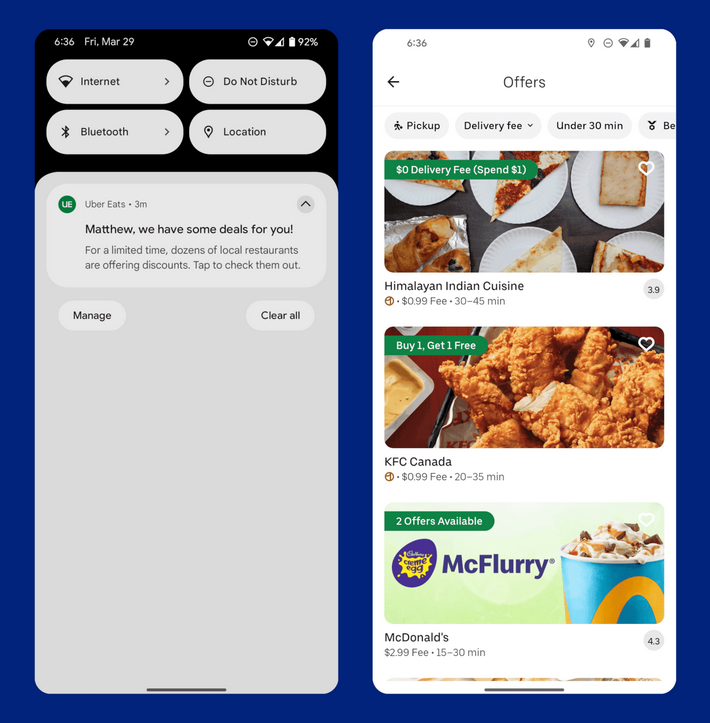
4. Personalized Search Results
Personalized search results that tailor search engine results to an individual’s unique preferences, clicks, and past behaviors make it easier for customers to find relevant products quickly. When a customer types a query, it returns a series of relevant results that is most close to the customer’s query.
Implementing predictive search features that suggest products as the customer types their query based on popular searches and the customer’s past behavior. For example, AirBnb shows personalized search results to offer listings that match travelers’ preferences.
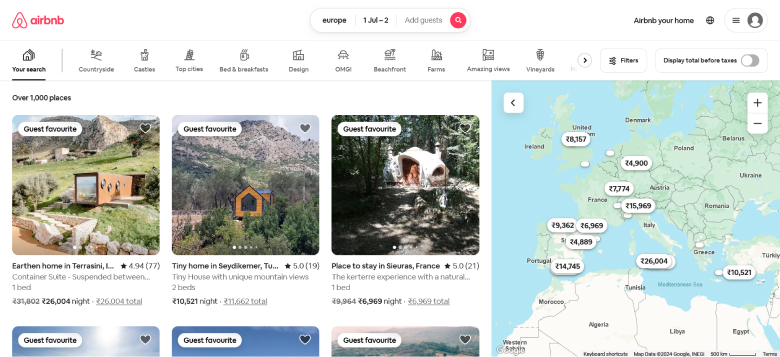
5. Personalized Email Marketing
Personalized email marketing involves sending targeted emails to users based on interests, behaviors, and needs in mind. By leveraging data points and preferences unique to each recipient, personalized emails are tailored to foster deeper connections with your customers.
Send targeted emails that include recommended products based on their purchase history, offering special discounts, and previous interactions, which can help you have higher open and increased click-through rates.
For example, JetBlue sends personalized emails to customers. (Source: Pinterest)
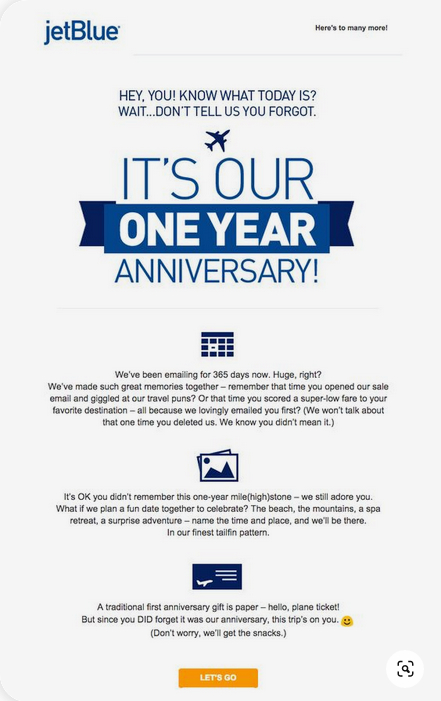
6. Location Based Targeting
Some brands offer special discounts or content based on the user’s geographical location. Brands can display local products, adjust prices, or promote regional special offers that are relevant to the customers.
Show content in the customer’s local language and highlight specific deals to make the offers more personalized experiences.
For example, the location-based offers on the food delivery app Doordash. When the user opens the app, they often receive notifications that are nearby or special offers in that area. (Source: Elasticpath)
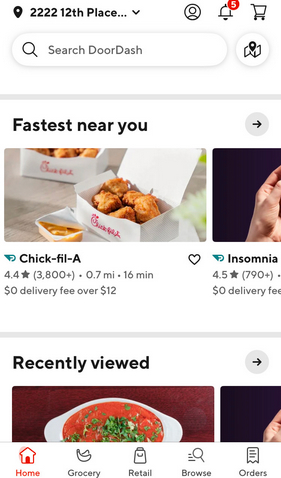
7. Integrate User-Generated Content
User-generated content plays a crucial role in eCommerce personalization. By leveraging content created by customers, such as reviews, photos, videos, and testimonials, visitors get to see the product in real life.
Highlighting reviews from other customers with similar preferences or demographics makes the review more relevant and trustworthy. Using user-generated content as social proof on your website can offer many benefits and is one of the effective personalization techniques to increase sales.
For example, Seavees’ webpage shows a feed of Instagram posts from customers who tag Seavees in their posts.

These personalized tactics can help eCommerce businesses enhance the customer journey, making it more engaging and relevant and providing a seamless experience. This helps increase customer satisfaction, conversion rates, and customer loyalty.
Build trust & FOMO
Highlight real-time activities like reviews, sales & sign-ups.
Importance of Personalization for Ecommerce Success
Ecommerce personalization is one of the crucial components of eCommerce strategy and marketing. But why eCommerce businesses should implement personalization strategies?
Here are some key reasons why personalization is vital for eCommerce success.

Enhanced Customer Experience
Personalization in shopping makes it more relevant and enjoyable for customers to enjoy. When customers are recommended products and offers aligned with their previous interactions and interests, their shopping experience is more convenient and engaging.
Higher Conversion Rates
Personalization simplifies the journey to purchase for your customers, significantly boosting conversion rates. When customers see relevant products and offers, they are more likely to make a purchase.
Improved Customer Retention
Personalization encourages customers to repeat purchases by keeping them engaged. By continuously offering relevant products, businesses can retain customers for the long term and reduce churn rates.
Increased Customer Loyalty
Personalization helps to build stronger relationships with customers that help businesses understand and value their preferences. The personalized experience leads to higher customer satisfaction and loyalty, as customers are more likely to return to your store, which consistently meets their needs.
Increased Average Order Value
Personalization is a fantastic way to upsell and cross-sell products, encouraging customers to spend more. Suggesting complementary products and bundles based on their behaviors can help to increase your AOV.
Increased Brand Engagement
Personalized messages and recommendations increase customer engagement with your brand, which leads to deeper brand loyalty, higher sales, and more repeat customers.
Better ROI
Personalized marketing campaigns are more effective as they target specific customer segments with relevant messages. That leads to higher engagement rates, improved ROI on marketing efforts, and cost-effective campaigns.
Focusing on personalization, eCommerce businesses can create a more engaging and relevant shopping experience that drives more conversions, loyalty, and engagement.
Conclusion
It’s no secret that eCommerce personalization is a powerful tool for improving the shopping experience by significantly enhancing customer satisfaction, increasing engagement, and optimizing conversions for your brand.
Implementing their personalization techniques such as product recommendations, targeted email marketing, special discounts & offers, and location-based personalization that transform customers’ journeys into a highly relevant and enjoyable one.
Personalization efforts foster stronger bonds with the customers, leading to improved customer experience and loyalty and influencing them to take the desired action. Remember to use customer data wisely by relying on relevant sources, updating regularly, and respecting customer privacy.
These personalization tactics can help your business stand out, feel more valued, and boost your conversion rates.
